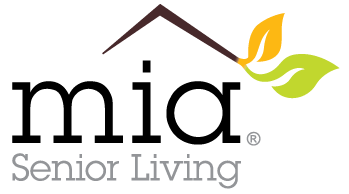On November 12, 1995, an event occurred that completely changed the course of my life. While serving as Florida Secretary for Aging Services I was summoned to a public housing building in Fort Lauderdale, Florida where a fire had killed 12 of the residents. For the first time I came face to face with the squalid and precarious conditions in which low-income seniors in this country subsist. The image of that day never left me and I made a promise to myself that I was going to make it better. Charged with this moral obligation and strength I was able to secure a deteriorating public housing building in downtown Miami with the promise of turning it around and creating something new. With my political ties in Tallahassee still fresh I secured $1.2 million to retrofit and license that building. In six months it was full with a long waiting list, had become the model for the nation and had won four national awards. Some may say it was luck, I believe it was stubbornness and commitment that made it happen. I had fulfilled my promise. To the 104 seniors living at Helen Sawyer this was the beginning of the best time of their lives. End of story. I never had the intention of doing this over and over in twenty-three states. But it was no longer up to me; the notoriety that this little program gained made it impossible for me to turn the page. And so it began, my journey in replicating this common sense approach to providing 24 hour services to low-income seniors where they live so they will never be forced into a nursing home.
There is no doubt that good publicity helps in creating an innovation, but that alone is not enough. I knew that innovation is almost always built on rejection. There were so many obstacles that had to be overcome. The worst was the mind set of policymakers and public officials reluctant to change the way we care for the poor elderly. They seem to have a spiritual blindside that prevents them from seeing the human side of the dilemma. If I was going to replicate this program in other counties and states, government funding was critical. My experience in government was important in understanding government, what moves them; how to obtain their collaboration. We needed to gather some ammunition to win them over. How about doing more with less? With the funds they spent for each individual forced into a nursing home, I was going to care for four. How about if we could prove to them that our care involved changing lifestyles and improving health? We started gathering data that proved that we were avoiding hospitalizations, emergency admissions, reducing the number of prescription drugs and 911 calls. That certainly caught their attention and in 2010 our little company was able to change national policy. Funding this type of program instead of nursing home care became a priority. The Community First Option program was started in collaboration with two large federal agencies: Health and Human Services and the U.S. Department of Housing. The program was initially funded with $46 million. Until now, they did not talk with each other, and now they were cooperating in making it possible for low-income seniors to live with dignity in the comfort of their homes. What a novel idea!
Now, I said, we can concentrate in avoiding other obstacles in scaling our program. What would it take to convince private investors to provide the capital to purchase distressed properties and hire us to provide the services to this exponentially growing and long neglected population? A good return on their investment perhaps? Although corporate America needs to be seen as having a social impact, what they are truly interested in is good returns. Conquering corporate America became a major goal for us. We never forgot, however, that our social mission had to be safeguarded.
